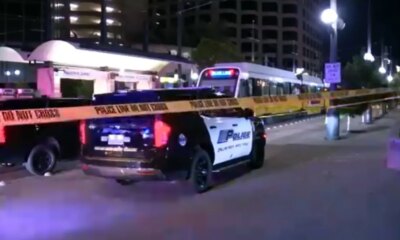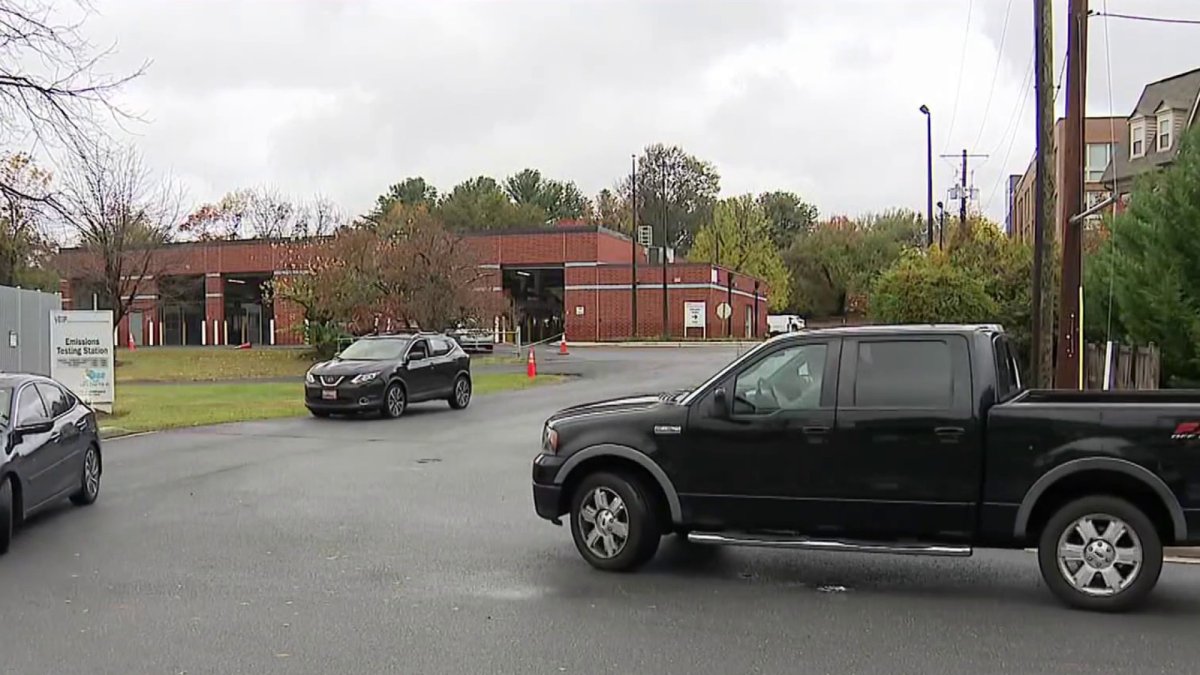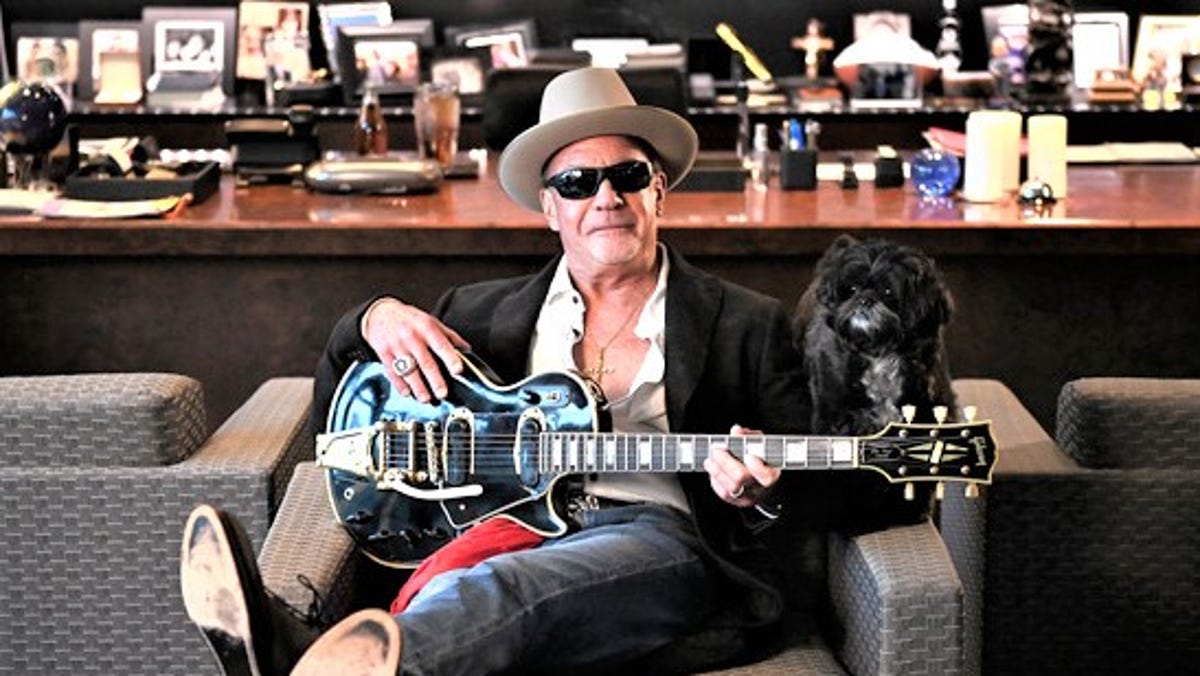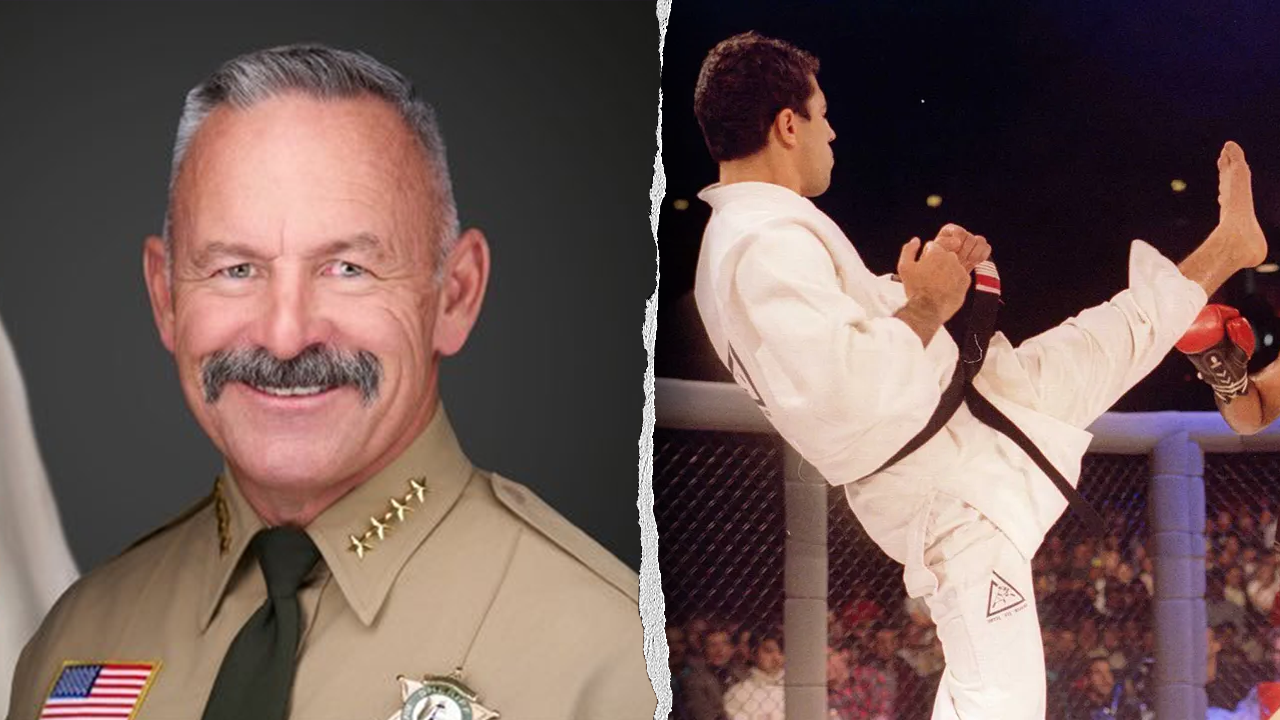San Francisco, CA
World's first hydrogen-powered commercial ferry set to operate on San Francisco Bay, officials say
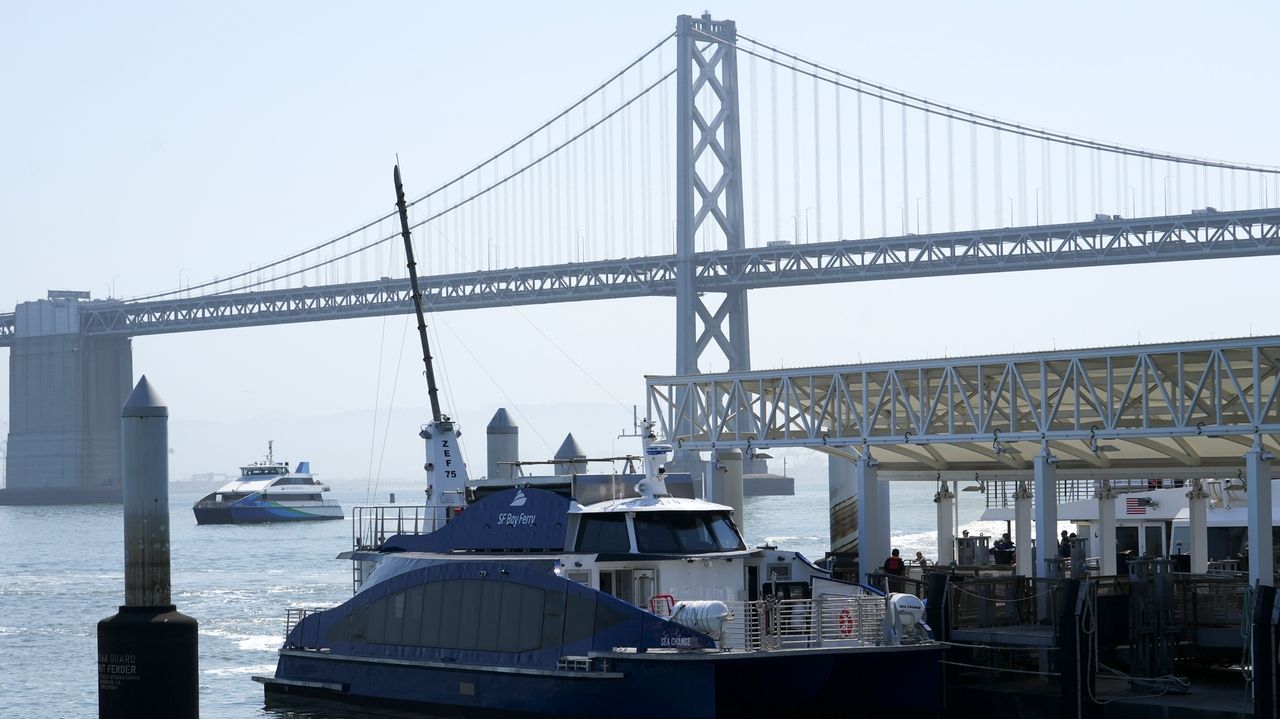
SAN FRANCISCO — The world’s first hydrogen-powered commercial passenger ferry will start operating on San Francisco Bay as part of plans to phase out diesel-powered vessels and reduce planet-warming carbon emissions, California officials said Friday, demonstrating the ship.
The 70-foot (21-meter) catamaran called the MV Sea Change will transport up to 75 passengers along the waterfront between Pier 41 and the downtown San Francisco ferry terminal starting July 19, officials said. The service will be free for six months while it’s being run as part of a pilot program.
“The implications for this are huge because this isn’t its last stop,” said Jim Wunderman, chair of the San Francisco Bay Area Water Emergency Transportation Authority, which runs commuter ferries across the bay. “If we can operate this successfully, there are going to be more of these vessels in our fleet and in other folks’ fleets in the United States and we think in the world.”
Sea Change can travel about 300 nautical miles and operate for 16 hours before it needs to refuel. The fuel cells produce electricity by combining oxygen and hydrogen in an electrochemical reaction that emits water as a byproduct.
The technology could help clean up the shipping industry, which produces nearly 3% of the world’s total greenhouse gas emissions, officials said. That’s less than from cars, trucks, rail or aviation but still a lot — and it’s rising.
Frank Wolak, president and CEO of the Fuel Cell & Hydrogen Energy Association, said the ferry is meaningful because it’s hard to reduce greenhouse gas emissions from vessels.
“The real value of this is when you multiply out by the number of ferries operating around the world,” he said. “There’s great potential here. This is how you can start chipping away at the carbon intensity of your ports.”
Backers also hope hydrogen fuel cells could eventually power container ships.
The International Maritime Organization, which regulates commercial shipping, wants to halve its greenhouse gas releases by midcentury.
As fossil fuel emissions continue warming Earth’s atmosphere, the Biden administration is turning to hydrogen as an energy source for vehicles, manufacturing and generating electricity. It has been offering $8 billion to entice the nation’s industries, engineers and planners to figure out how to produce and deliver clean hydrogen.
Environmental groups say hydrogen presents its own pollution and climate risks.
For now, the hydrogen that is produced globally each year, mainly for refineries and fertilizer manufacturing, is made using natural gas. That process warms the planet rather than saving it. Indeed, a new study by researchers from Cornell and Stanford universities found that most hydrogen production emits carbon dioxide, which means that hydrogen-fueled transportation cannot yet be considered clean energy.
Yet proponents of hydrogen-powered transportation say that in the long run, hydrogen production is destined to become more environmentally safe. They envision a growing use of electricity from wind and solar energy, which can separate hydrogen and oxygen in water. As such renewable forms of energy gain broader use, hydrogen production should become a cleaner and less expensive process.
The Sea Change project was financed and managed by the investment firm SWITCH Maritime. The vessel was constructed at Bay Ship and Yacht in Alameda, California, and All-American Marine in Bellingham, Washington.

San Francisco, CA
The True Story of the Military’s Secret 1950 San Francisco Biological Weapons Test | KQED

Episode Transcript
Katrina Schwartz: It’s a foggy September day in 1950s San Francisco. For most Bay Area residents, it’s a normal day…people get up and head out to work or school…just like any other day. The San Francisco Examiner is full of news about the Korean War and a reminder that daylight savings ends soon.
On the ocean, just outside the Golden Gate, floats a Navy boat. On deck, men hold up what look like big metal hoses and point them at San Francisco. There’s a long, low cloud over them that could be mistaken for part of the area’s usual fog, but it’s not.
Two days later, Stanford hospital, which was located in San Francisco at the time, started noticing something odd. Doctors started seeing some patients complaining of serious chest pain, shortness of breath, chills and fever — symptoms of what’s called serratia marcescens infection. Doctors had never seen this bacteria at the hospital before, and certainly not in so many patients at one time. Eleven people got sick, and one would die.
Is it possible that the U.S. military was testing biological weapons on its own citizens? That’s what one Bay Curious listener wants to know. We’ll get into it right after this. I’m Katrina Schwartz, and you’re listening to Bay Curious.
Sponsor message
Katrina Schwartz: The question we’re answering today is whether it’s possible the U.S. government was spraying bacteria over its own citizens to learn more about how to stage a biological attack on an enemy. And it’s true. In 1950, the military sprayed bacteria over an unsuspecting Bay Area for eight days, with no medical monitoring plan.
It was just one of hundreds of experiments that the military carried out in secret across the nation from the 1940s through the 1960s. These tests would affect people’s lives and help shape our country’s policy on biological weapons. Reporter Katherine Monahan takes us back to that time to help us understand how and why this happened.
Sounds of archival newsreel static
Katherine Monahan: The U.S. was obsessed with the threat from the Soviet Union.
Archival newsreel: In 1950, men throughout the world learned to look at the brutal face of communism…
Katherine Monahan: The Cold War was in full swing, and the Korean War had just begun. Only a few years out of World War II, people feared a World War III was on the horizon. And Army spokesmen said the only intelligent move was to prepare.
Clip 1: For many years, information has been needed about the effects of a biological warfare attack on man.
Clip 2: Because today the threat cannot be ignored.
Clip 3: If we adopt a pacifist attitude the end can only be a communist dictatorship of the world.
Katherine Monahan: During WWII, the U.S. government had created a chemical weapons research division within the military. And in the late 1940s, it began testing on human subjects.
Matthew Meselson: A very small circle of people knew anything about this. After all, it certainly wasn’t public knowledge.
Katherine Monahan: Matthew Meselson is a Harvard molecular biologist and geneticist who served as a government consultant on arms control. He was instrumental in changing our nation’s policy on biological weapons.
Matthew Meselson: Research on weapons goes on all the time. Otherwise, you’d be caught with your pants down, so to speak. If a war broke out.
Katherine Monahan: The program was centered at Fort Detrick in Maryland, where the Army produced, tested, and stockpiled pathogens like anthrax and botulism, as well as defoliants like Agent Orange.
The military wanted to know how these substances could be used to attack different populated areas. For example, whether a small boat offshore could spray a biological weapon to cover a coastal city like San Francisco.
Matthew Meselson: They needed something that was, first of all, thought to be harmless because they certainly didn’t wanna kill everybody in San Francisco or Oakland. And that could easily be detected by simple methods.
Katherine Monahan: So the Army used substances that would disperse like a biological weapon, but weren’t actually harmful, as far as they knew.
For the San Francisco experiment, they chose two bacteria: bacillus globigii and serratia marcescens. Serratia marcescens is found naturally in water and soil, and it’s not normally dangerous to healthy people, but then it’s not normally sprayed into the air in large quantities.
It has a unique property that makes it easy to track.
Matthew Meselson: It’s bright red, and that’s why the Navy decided to use it, because when you plate a sample from the air on a petri dish, there’s only one thing that makes nice red colonies and they’re very easy to see.
Katherine Monahan: While the testing team sprayed the bacteria along the coast, monitors at 43 sampling stations around the Bay Area held up little cones to collect it, and found that it had traveled as far as 23 miles, covering the East Bay as well. The Army summarized its findings in a report.
Voice over: Every one of the 800,000 people in San Francisco exposed to the cloud at normal breathing rate (10 liters per minute) inhaled 5,000 or more fluorescent particles.
Katherine Monahan: That’s per minute. The test, Meselson said, showed that it was indeed possible to attack a coastal city by spraying a biological weapon from a boat offshore.
Matthew Meselson: Presumably, of course, if it was a real war, you’d use something like anthrax that would kill people.
Katherine Monahan: But this supposedly harmless bacteria may have killed someone.
Music featuring chimes
The winds carried the spray directly over Stanford hospital. Eleven patients developed serratia marcescens infections. And one of them — a 75-year-old Irish American named Edward Nevin — died, when the bacteria made its way into his heart.
Its source was a mystery.
Meselson would be one of the first members of the public to connect Edward Nevin’s death to the military’s experiment. But not until 15 years later, when a lab assistant shared a secret with him. Her boyfriend had worked at the Navy’s Biological Laboratory Facility in Oakland.
Matthew Meselson: Her boyfriend told her that one day the commander of this naval base called a meeting of everybody and told them that a recent test they had just done, probably was responsible for the death of a man, and if anyone ever talked about that publicly, that the Navy would make sure that that person could never find a job anywhere in the United States.
Katherine Monahan: The Pentagon declined to interview for this story, but said in a statement that it is “committed to safeguarding our nation and our citizens.”
Meselson was already gravely concerned about the U.S. biological weapons program because he’d worked for the United States Arms Control and Disarmament Agency in 1963. He had high security clearances and was given a tour of Fort Detrick in Maryland, where the biological weapons were developed.
Archival newsreel: At Camp Detrick, a National Guard airport near Fredrick, Maryland, requisitioned for this purpose, a new chapter in an uncharted adventure was to begin.
Matthew Meselson: We came to a seven-story building. So I asked the Colonel. What do you do in this building? And he said, we make anthrax spores there. So I said something like, well, why do we do that?
Archival newsreel: The aim: defensive and offensive protection against this new weapon.
Matthew Meselson: And he said, because anthrax could be a strategic weapon. Much cheaper than hydrogen bombs. Now, I don’t know if it occurred to me right away. But certainly on the taxi ride back to the State Department, it dawned on me that the last thing the United States would like is a cheap hydrogen bomb so that everybody could have one.
Katherine Monahan: Meselson began alerting members of the government that this was madness. He was friends with Secretary of State Henry Kissinger and was able to get the message through to President Richard Nixon.
Matthew Meselson: You don’t wanna make powerful weapons very, very cheap. This would create a world in which we would be the losers. It’s obvious. It’s a simple argument and that’s what made the United States decide to get out of it.
Katherine Monahan: In 1969, Nixon ended U.S. research into biological weapons and ordered all offensive toxins destroyed. And in 1972, the U.S. signed on to the international Biological Weapons Convention — still in effect today — in which almost all nations agree not to develop or stockpile biochemical weapons.
Around this time, the public started to find out about the more than 200 tests that had been done on them. And people were horrified. One of the first experiments people learned about was in the New York City subway system. Here’s a reenactment from a 1975 Senate hearing. Senator Gary Hart of Colorado is questioning Charles Senseney, a physicist at Fort Detrick.
Voice actor for Gary Hart: How was the study or experiment conducted?
Voice actor for Charles Senseney: Well, there was one person that was the operator — if you want to call it an operator — who rode a certain train, and walking between trains, dropped what looked like an ordinary light bulb, which contained biological simulant agent. And it went quite well through the entire subway system.
Voice actor for Gary Hart: Were the officials of the city of New York aware that this study was being conducted?
Voice actor for Charles Senseney: I do not believe so.
Voice actor for Gary Hart: And certainly the passengers weren’t?
Voice actor for Charles Senseney: That is correct.
Katherine Monahan: The public was appalled. Even more so when a subsequent hearing and report revealed more tests — in greyhound bus stations in Alaska and Hawaii, in the national airport in Washington D.C., on the Pennsylvania Turnpike, in Texas, and the Florida Keys.
Edward Nevin III remembers when he first learned about the San Francisco experiment, now known to the public as Operation Seaspray.
Edward Nevin III: I was on the BART train going into my office in San Francisco for Berkeley, where I lived.
Katherine Monahan: He was reading the San Francisco Chronicle, as he usually did on his way to work, and saw that his grandfather was the man who died in Stanford hospital.
Edward Nevin III: I was reading it with sort of an upset that the government would do something like that. And, uh, I turned to the back page and it says, ‘The only person who died was Edward Nevin.’ That’s how I learned it.
Katherine Monahan: Eddie III, as his grandfather used to call him, had been 9-years-old when his grandpa went into the hospital for a simple surgery, with a full recovery expected. His family had been stunned and puzzled by his death.
Edward Nevin III: I remember sitting in a ‘41 Chevy, my family’s car, uh, outside, waiting for my parents who went in to see him. They didn’t want the children in there. So I have absolute memory of that moment.
Katherine Monahan: Eddie III by 1976 was a trial lawyer in his early 30s. And he decided to sue the United States government.
He called his huge Irish American family together to discuss it.
Edward Nevin III: One aunt, God love her, said, uh, ‘Eddie, you’re pretty young, are you sure we shouldn’t get someone that’s been around a while, you know?’ I said, ‘I don’t think anyone will do it. There’s no real money in it.’
Katherine Monahan: The family was reluctant at first. They didn’t want the publicity. And they knew Eddie’s grandfather, a proud immigrant who loved America, would not have wanted to sue his country.
Edward Nevin III: He had his citizenship papers on the wall of the living room in the home. I truly believe he would’ve told me not to do it if he were alive. I’m sure he would’ve said no.
Katherine Monahan: But Eddie III was determined, and his family came to see it as the only way to find out what had truly happened to their loved one. So in 1981, the trial of the Nevin family — all 67 of them — vs. the United States began.
It was action-packed. At one point, an army general challenged Eddie III to a fistfight outside the courtroom.
Edward Nevin III: People were really mad at me. They, they were, they felt like they were quite a heroes themselves for doing this hard work, you know? And so they were upset that I would even imagine bringing a case like that.
Katherine Monahan: The military maintained that the test was safe, and the death was a coincidence. And that, anyway, the government had legal immunity from being sued by a citizen for a high-level planning decision like this one.
For the family’s side, Dr. Meselson and other scientists argued that the serratia found in Edward Nevin’s blood was likely the same serratia the military had sprayed over the city. And that they should have considered that there was potential for it to cause disease.
Edward Nevin III: The judge did one fine thing. He said, there’s no jury in this case. I will give the jury box to the press. And so they filled the jury box every day.
Katherine Monahan: That is where the real trial took place, Nevin figures, in the minds of the American people. He says every day he was interviewed outside the courthouse, and the story ran in newspapers across the country.
Katherine Monahan in scene: Did you ever think that you were gonna win?
Edward Nevin III: No. But we still had to tell the story. To have a citizen submitted to that kind of risk is awful.
Katherine Monahan: The Nevins lost their case. They appealed, lost again at the 9th Circuit, and appealed again to the U.S. Supreme Court, which declined to hear it.
Looking back on it all, Dr. Meselson, who campaigned to ban chemical weapons, is relieved that the era of secret chemical warfare testing on the public is over.
Matthew Meselson: This kind of weapon is really useful only if you want to kill civilians. And that’s not a very good thing to do in a war. Who knows where it could lead. It’s turning our knowledge of life against life. It’s a bad idea.
Katherine Monahan: Today, so far as we have evidence for, no country in the world is developing new biological weapons.
Katrina Schwartz: That story was brought to you by KQED reporter Katherine Monahan.
Bay Curious is produced at member-supported KQED in San Francisco.
Our show is produced by Gabriela Glueck, Christopher Beale and me, Katrina Schwartz. With extra support from Maha Sanad, Katie Sprenger, Jen Chien, Ethan Toven-Lindsey and everyone on Team KQED.
Thank you for listening and donating and being members. We appreciate it so much. Thank you, and have a great week.
San Francisco, CA
Death of beloved neighborhood cat sparks outrage against robotaxis in San Francisco

The death of beloved neighborhood cat named KitKat, which was struck and killed by a Waymo in San Francisco’s Mission District last week, is sparking uproar in the city and across the internet. Now local politicians and community leaders are harnessing momentum to put new limits on the fast-spreading autonomous vehicle industry.
KitKat was a regular fixture at the deli and liquor store Randa’s Market, and was well known in the neighborhood and on social media. In a recent podcast interview, Daniel Zeidan, part of the family that owns Randa’s, described KitKat as unequivocally adored.
“The nickname that they had for him was the mayor of 16th Street,” Zeidan said. “He would walk down there, stare up at the employees and wait for them to throw chicken at him … He really ran the block.”
But on 27 October, KitKat was struck by a Waymo autonomous vehicle, which in recent years has become a ubiquitous sight around the city. Waymo confirmed the death in a statement to the Guardian. “While our vehicle was stopped to pick up passengers, a nearby cat darted under our vehicle as it was pulling away,” a company spokesperson said.
Tributes have poured in across social media for KitKat, who could often be found curled up behind the counter at Randa’s, or strolling into the nearby Dalva bar to receive a royal reception. A shrine has popped up outside of Randa’s, replete with photos of KitKat, bouquets of flowers and well-wishes.
Local legislators are using the incident to call for limits on the industry’s growth. Jackie Fielder, a San Francisco city supervisor, said she plans to introduce legislation that would allow counties to decide whether they will permit the operation of autonomous vehicles, and is calling upon the California legislature to consider doing the same. Fielder said the bill will be similar to a 2024 effort in the California legislature.
“We are absolutely coming for your bottom dollar,” Fielder said of Waymo in a Tuesday press conference held outside of Randa’s Market. Speakers included local politicians, union leaders and transit advocates, who touched on fears of job replacement via AI and the loss of local political control against tech companies.
Justin Dolezal, a local bar owner and head of a small business coalition, also spoke about KitKat’s role in the community, and in favor of the resolution.
“The mayor of this space was taken by technology that none of us asked for, and crucially to this resolution, none of us consented to,” Dozel said.
KitKat’s death is the latest swell in waves of anti-AI sentiment and concerns over autonomous vehicles, although others point to data showing a firm safety record. While Waymo says it operates around 1,500 cars across the US, exact numbers for San Francisco’s fleet are unclear. Protestors and activists have taken to disabling Waymos by placing traffic cones on their hoods or even setting them on fire. Cruise, another autonomous taxi company, agreed last year to shell out more than $8m in 2024 to a Bay Area woman who was dragged over 20ft of pavement by an autonomous vehicle. Questions have also arisen over how to ticket and discipline autonomous vehicles when they violate traffic laws.
Waymo declined to comment on the proposed legislation in a written statement to the Guardian but said that “trust and the safety of the communities we serve is our highest priority”.
“We send our deepest sympathies to the cat’s owner and the community who knew and loved him, and we have made a donation to a local animal rights organization in his honor,” the statement said.
As politicians push for change, some have taken upon themselves to honor KitKat in distinctly Silicon Valley-style ways. Zeidan has released a memecoin honoring KitKat’s legacy, and also said that he was disappointed to see others launch their own imitation tokens in an attempt to profit off KitKat’s death.
Zeidan hopes to use proceeds to support local veterinarians and animal welfare organizations. He was inspired to do so after the veterinarian that attempted to save KitKat’s life dropped the cost of the entire medical bill.
“We wanted to honor the cat,” Zeidan said. “We want to support shelters, we want to support local animal organizations that help animals.”
San Francisco, CA
San Francisco man found guilty of murder in brutal beating of elderly woman exercising

SAN FRANCISCO – A young man has been found guilty of murder in the brutal beating of an 89-year-old woman who died a year after the attack.
Verdict
What we know:
Keonte Gathron, 25, was convicted Tuesday in the killing of Yik Oi “Huang Popo” Huang, who was robbed near her Visitacion Valley home in January 2019.
The Attack
The backstory:
Huang had stepped outside to do her daily exercises at the Visitacion Valley Playground when she was attacked.
After beating and robbing the elderly woman, authorities said Gathron went to Huang’s nearby home and burglarized it.
Huang was found on Raymond Avenue, a few blocks from her home, bloodied, disoriented, and suffering from severe head injuries. She died a year later, in January 2020, from complications related to her injuries.
The park where the attack occurred was later renamed Yik Oi Huang Peace and Friendship Park in honor of the woman.
-

 Milwaukee, WI1 week ago
Milwaukee, WI1 week agoLongtime anchor Shannon Sims is leaving Milwaukee’s WTMJ-TV (Channel 4)
-

 News1 week ago
News1 week agoWith food stamps set to dry up Nov. 1, SNAP recipients say they fear what’s next
-

 Culture1 week ago
Culture1 week agoVideo: Dissecting Three Stephen King Adaptations
-

 Seattle, WA4 days ago
Seattle, WA4 days agoESPN scoop adds another intriguing name to Seahawks chatter before NFL trade deadline
-

 Seattle, WA1 week ago
Seattle, WA1 week agoFOX 13’s Aaron Levine wins back-to-back Jeopardy! episodes
-

 San Diego, CA1 week ago
San Diego, CA1 week agoAdd Nick Hundley, Ruben Niebla to list of Padres’ managerial finalists
-

 Education1 week ago
Education1 week agoOpinion | New York City Mayoral Candidates: Who Would Be Best?
-

 Culture1 week ago
Culture1 week agoCan You Pair Up These 1980s Novels and Their First Lines?

